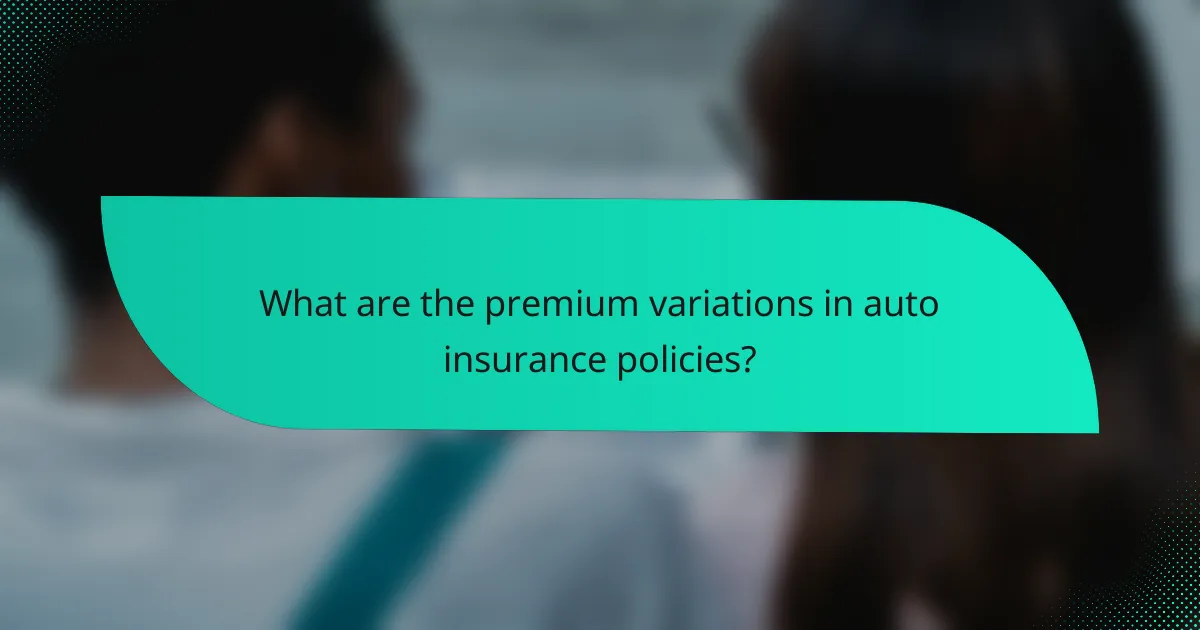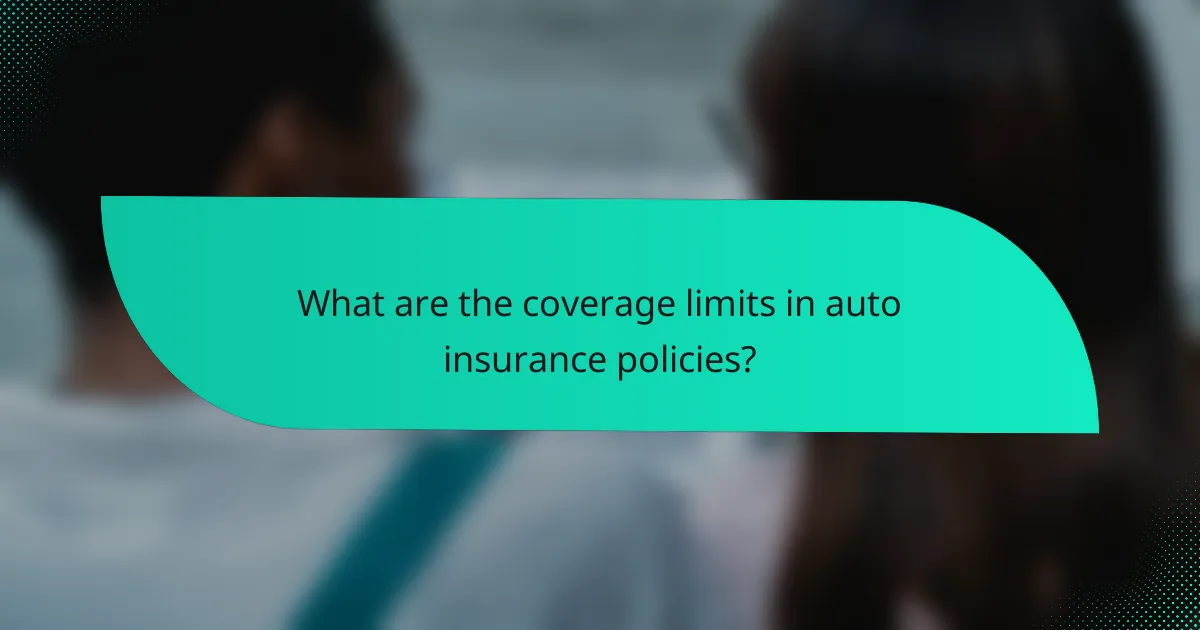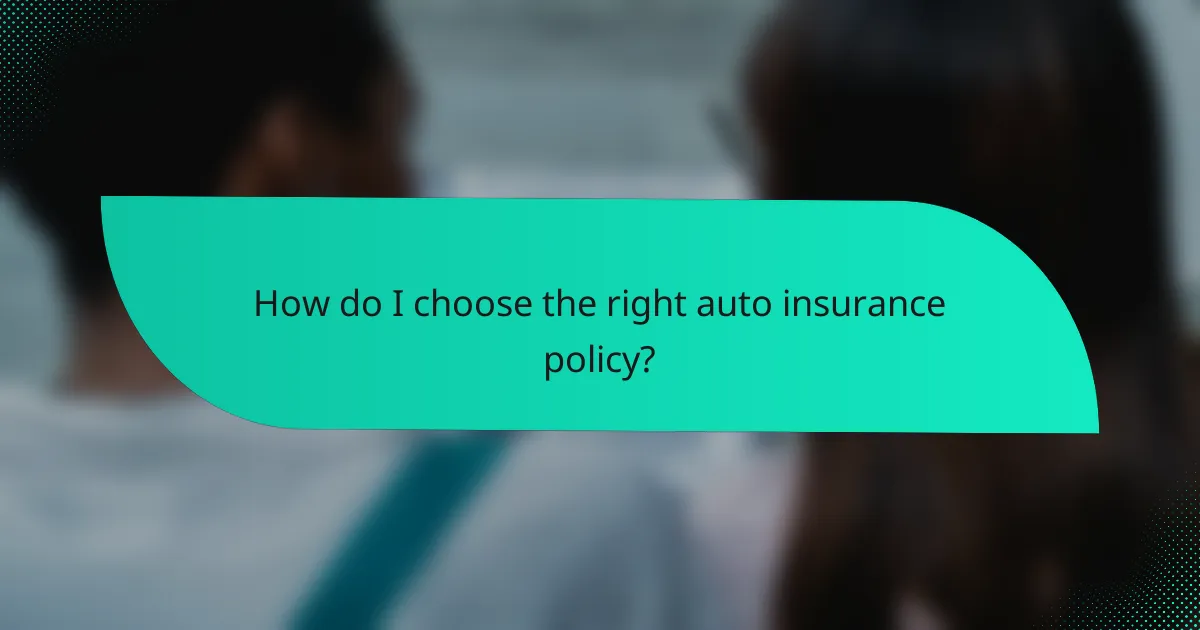Auto insurance policies can vary widely in premium costs due to factors such as location, driver profile, and selected coverage options. By understanding these variations, consumers can make informed choices that align with their financial needs. Additionally, various discounts are available to help lower premiums, rewarding safe driving and other low-risk behaviors. It’s also essential to be aware of coverage limits, as they dictate the maximum payout an insurer will provide in the event of a claim, ensuring adequate financial protection.

What are the premium variations in auto insurance policies?
Premium variations in auto insurance policies can differ significantly based on several factors, including location, driver profile, and coverage options. Understanding these variations helps consumers choose the right policy that fits their needs and budget.
State-specific premium differences
Auto insurance premiums vary widely by state due to differing regulations, risk factors, and market conditions. For instance, states with higher accident rates or uninsured drivers may see higher premiums. In contrast, states with robust safety regulations often enjoy lower rates.
For example, in California, the average annual premium might range from $1,000 to $1,500, while in Maine, it could be as low as $800. It’s crucial to check state-specific factors when evaluating insurance costs.
Factors affecting premium rates
Several key factors influence auto insurance premium rates, including the driver’s age, driving history, and the type of vehicle insured. Younger drivers typically face higher premiums due to their inexperience, while drivers with a clean record may qualify for lower rates.
Additionally, the make and model of the vehicle can impact premiums. Luxury cars or those with high theft rates often come with higher insurance costs. Consumers should consider these factors when assessing their insurance options.
Comparison of major insurers
When comparing major auto insurance providers, it’s essential to look at both coverage options and premium rates. Companies like State Farm, Geico, and Progressive often have varying rates for similar coverage levels, so obtaining quotes from multiple insurers is advisable.
For instance, Geico may offer competitive rates for younger drivers, while State Farm might provide better discounts for bundling policies. Always review the coverage limits and available discounts to ensure you get the best value for your premium.

What discounts are available for auto insurance?
Auto insurance discounts can significantly reduce your premium costs. Common discounts include safe driver, multi-policy, and good student discounts, each designed to reward specific behaviors or circumstances that indicate lower risk.
Safe driver discounts
Safe driver discounts are offered to policyholders who maintain a clean driving record without accidents or traffic violations over a specified period. Insurers typically provide discounts ranging from 10% to 30% for drivers who have not filed claims for several years.
To qualify, you may need to provide proof of your driving history or complete a defensive driving course. Always check with your insurer for specific eligibility criteria and potential savings.
Multi-policy discounts
Multi-policy discounts are available when you bundle multiple insurance policies, such as auto and home insurance, with the same provider. This can lead to savings of 5% to 25% on your auto insurance premium.
When considering this option, evaluate the total cost of bundled policies versus individual ones to ensure you are receiving the best deal. Some insurers may offer additional incentives for adding more policies.
Good student discounts
Good student discounts reward young drivers who maintain a high academic performance, typically a GPA of 3.0 or higher. Insurers may offer discounts of around 10% to 20% for students under a certain age, often 25.
To take advantage of this discount, you will usually need to provide a report card or proof of enrollment. Encourage students to maintain good grades, as this can lead to significant savings on insurance costs.

What are the coverage limits in auto insurance policies?
Coverage limits in auto insurance policies define the maximum amount an insurer will pay for a covered claim. These limits are crucial as they determine the extent of financial protection you receive in the event of an accident or damage to your vehicle.
Minimum coverage requirements by state
Each state in the U.S. has its own minimum coverage requirements for auto insurance, which typically include liability coverage for bodily injury and property damage. For example, some states may require a minimum of $25,000 for bodily injury per person and $50,000 per accident, along with $10,000 for property damage.
It’s essential to check your state’s specific laws, as failing to meet these minimums can result in fines or penalties. Additionally, some states may offer the option of higher coverage limits, which can provide better protection.
Maximum liability limits
Maximum liability limits refer to the highest amount an insurance company will pay for claims against you. These limits can vary widely, with many policies offering options ranging from $100,000 to $1 million or more. Choosing higher limits can be beneficial, especially if you have significant assets to protect.
Consider your personal financial situation and potential risks when selecting liability limits. If you frequently drive in high-traffic areas or have a long commute, higher limits may be advisable to safeguard against costly claims.
Comprehensive vs. collision coverage
Comprehensive coverage protects against non-collision-related incidents, such as theft, vandalism, or natural disasters, while collision coverage pays for damages to your vehicle resulting from an accident, regardless of fault. Understanding the difference is crucial when determining your coverage needs.
For example, if you live in an area prone to severe weather, comprehensive coverage may be more valuable. On the other hand, if you have an older vehicle, you might opt for only liability and collision coverage to save on premiums. Balancing these options based on your vehicle’s value and your risk tolerance is key.

How do I choose the right auto insurance policy?
Choosing the right auto insurance policy involves assessing your specific needs, understanding coverage options, and comparing different insurers. Focus on factors like premium costs, available discounts, and coverage limits to find a policy that fits your budget and requirements.
Assessing personal needs
Start by evaluating your driving habits, vehicle type, and financial situation. Consider how often you drive, the age and value of your car, and whether you need comprehensive or collision coverage. For instance, if you have a new vehicle, you may want higher coverage limits to protect your investment.
Additionally, think about your risk tolerance. If you prefer lower premiums, you might opt for higher deductibles, but be prepared for out-of-pocket costs in the event of a claim. A good rule of thumb is to ensure your liability coverage meets or exceeds the minimum state requirements.
Evaluating insurer reputation
Researching the reputation of potential insurers is crucial for ensuring reliable service. Look for customer reviews, ratings from organizations like J.D. Power or A.M. Best, and any complaints filed with your local insurance commissioner. A company with a strong track record in customer service and claims handling can save you stress later.
Compare premium costs and coverage options among reputable insurers. While lower premiums can be tempting, they may come with less favorable terms or coverage limits. Aim for a balance between affordability and the quality of service to make an informed decision.

What are the emerging trends in auto insurance?
Emerging trends in auto insurance are reshaping how policies are structured and priced. Key developments include usage-based insurance models, the impact of autonomous vehicles, and the integration of artificial intelligence in claims processing.
Usage-based insurance models
Usage-based insurance (UBI) models charge premiums based on actual driving behavior rather than traditional metrics like age or location. This approach often involves telematics devices that monitor driving habits, such as speed, braking, and mileage.
Drivers who demonstrate safe driving patterns can benefit from significant discounts, sometimes ranging from 10% to 30%. However, those with risky driving behaviors may face higher premiums, making it crucial for consumers to understand their driving habits before opting for UBI.
Impact of autonomous vehicles
The rise of autonomous vehicles is transforming the auto insurance landscape. As self-driving technology advances, liability may shift from drivers to manufacturers, leading to new policy structures and coverage considerations.
Insurers are beginning to explore coverage options specifically tailored for autonomous vehicles, which may include protection against software failures or cybersecurity threats. Consumers should stay informed about how these changes could affect their current policies and future coverage needs.
Integration of AI in claims processing
Artificial intelligence is streamlining claims processing by automating tasks such as damage assessment and fraud detection. This technology can significantly reduce the time it takes to settle claims, often cutting processing times from weeks to just a few days.
Insurers using AI can offer more personalized service and quicker responses, enhancing customer satisfaction. However, policyholders should be aware of potential privacy concerns and ensure they understand how their data is being used in the claims process.
